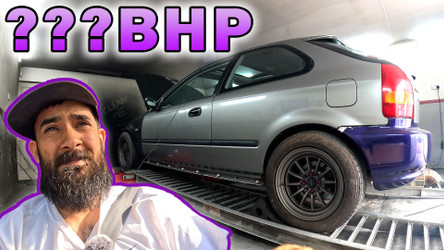How Much Power Did the AWD Turbo Civic Actually Make?!
Posted by Matthew Marks on 9th Oct 2025
How Much Power Did the AWD Turbo Civic Actually Make?!
We’ve just had our AWD Civic build mapped and can finally share the outcome: after months of building, modifying, and problem-solving, the AWD Turbo Civic was finally put on the dyno to see how much power it would make.
For those who haven't followed the build so far, here's a quick rundown: a forged B18C4 bottom end reinforced with CSS, paired with a crafted B18C head; the drivetrain features a CR-V / Freelander AWD system; a 3-inch road-legal custom exhaust; fuel delivery is handled by a Nuke Performance fuel cell and swirl pot system. At its core is the Haltech Nexus S2 ECU, with a Haltech IC-7 digital dash making everything work together.
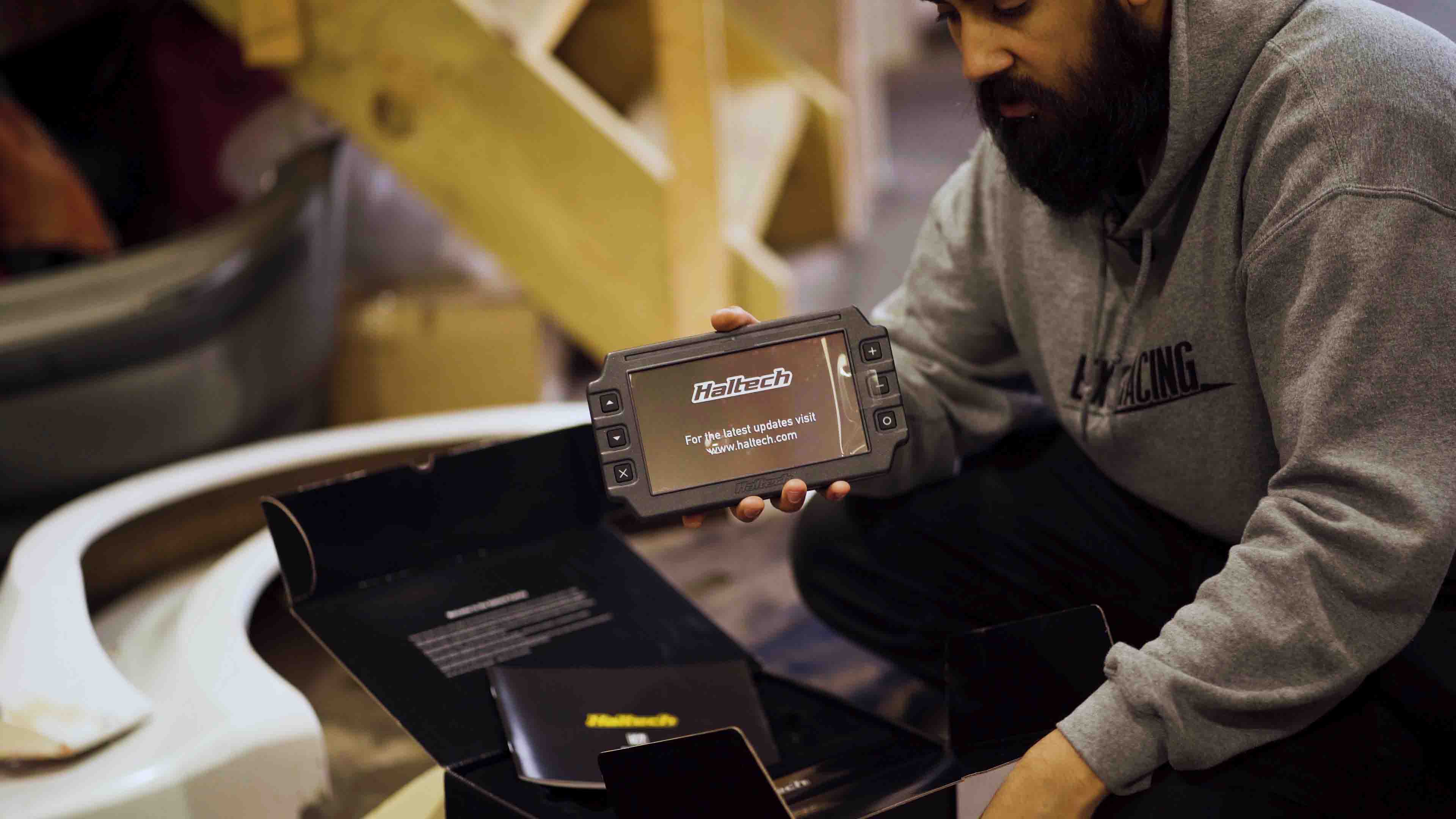
This wasn’t just another test session — it was the moment everything we’d worked on was about to come together and prove whether we could generate real power. Moving from the build phase to this milestone significantly raised the stakes.
From wiring to fabrication, nearly everyone around us contributed to the creation of this car. Each step was a learning experience, and reaching the dyno felt like a true victory. The big question was how much power it would make.
As you’ll see in the video below, things didn’t go exactly as planned. But that’s part of the process for a car like this (and not bringing good enough tyres, haha).
The Team Behind the Build
Before the car even made it to the dyno, many people were putting a lot of effort into making sure everything was perfect.
HPWorx handled the mapping and tuning, adjusting the Haltech ECU settings for optimal performance.
They’ve worked with us on several builds for our customers and their own, either purchasing heat management products from us or referring customers to them for mapping. We trust them to strike a balance between power and reliability.
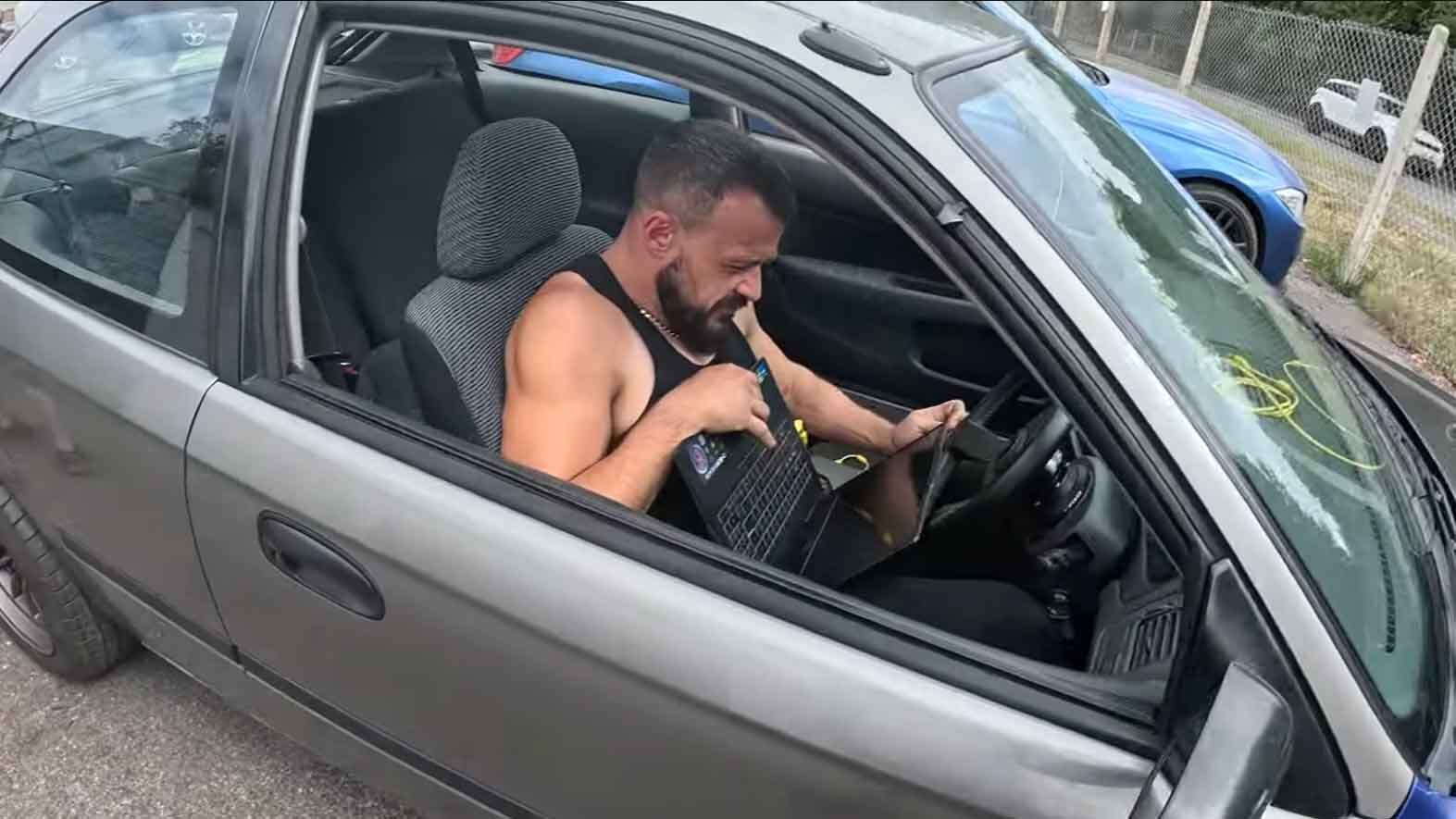
Phil from XDR Motors took charge of the wiring side and checked the car over before dyno day. Electrical reliability is one of those things most people overlook, but it’s what separates a good build from a great one.
Phil sorted all the loom work, sensor routing, and grounding, and then went through the car to ensure there were no leaks or loose fittings.

Scott from SML Developments helped us massively throughout the project. Whenever something didn’t fit right or a part needed reworking, Scott was there to help make it happen.
His attention to detail and fabrication skills really pushed this build to the level it’s at now.
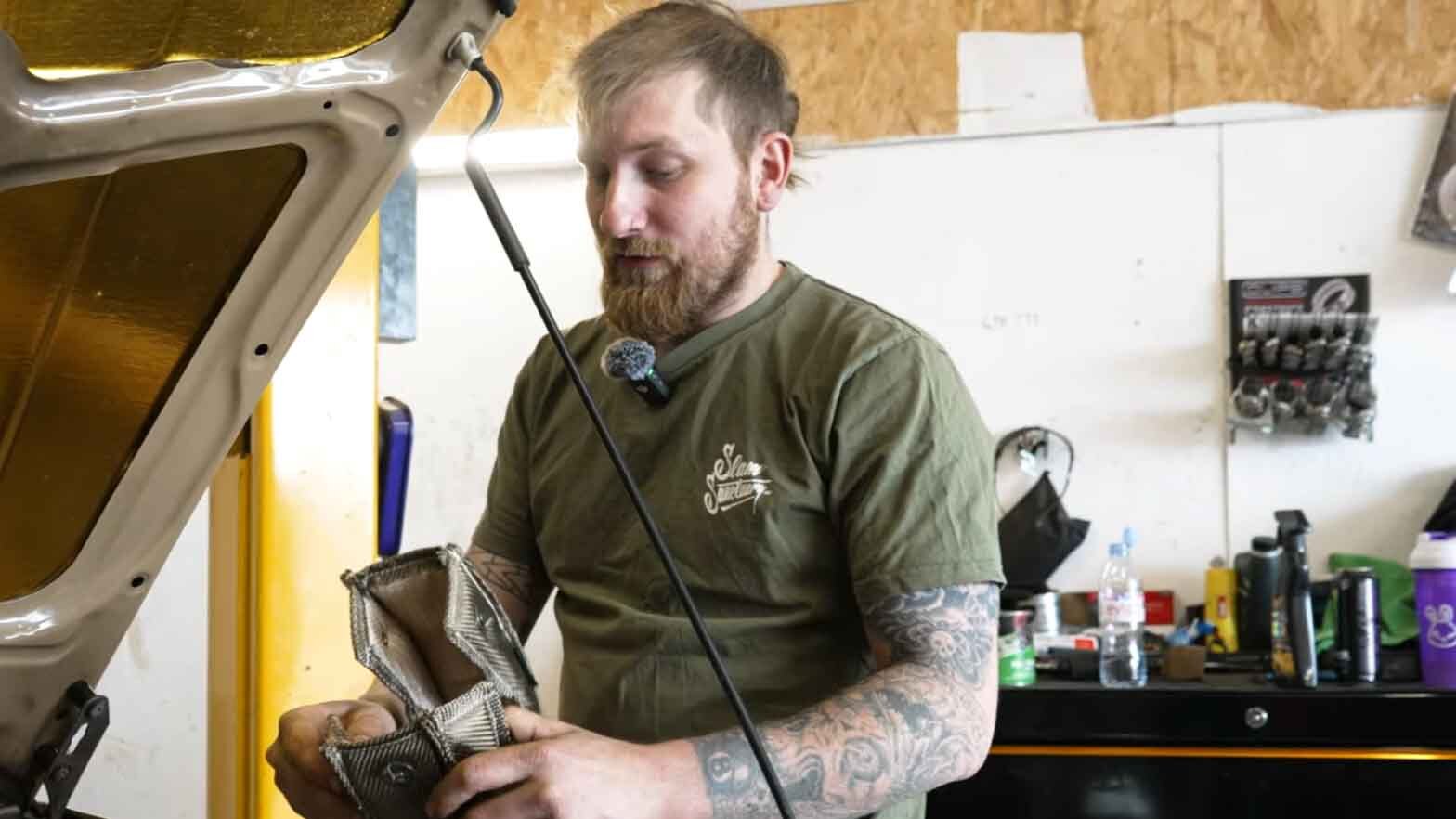
And finally, the team from JDK Autoworx was responsible for installing the full AWD (all-wheel drive) setup within 24 hours.
That conversion completely changed the character of the car — the traction, the way it leaves the line, even the sound. It’s transformed it from a quick FWD (front-wheel drive) build into something that really feels special.
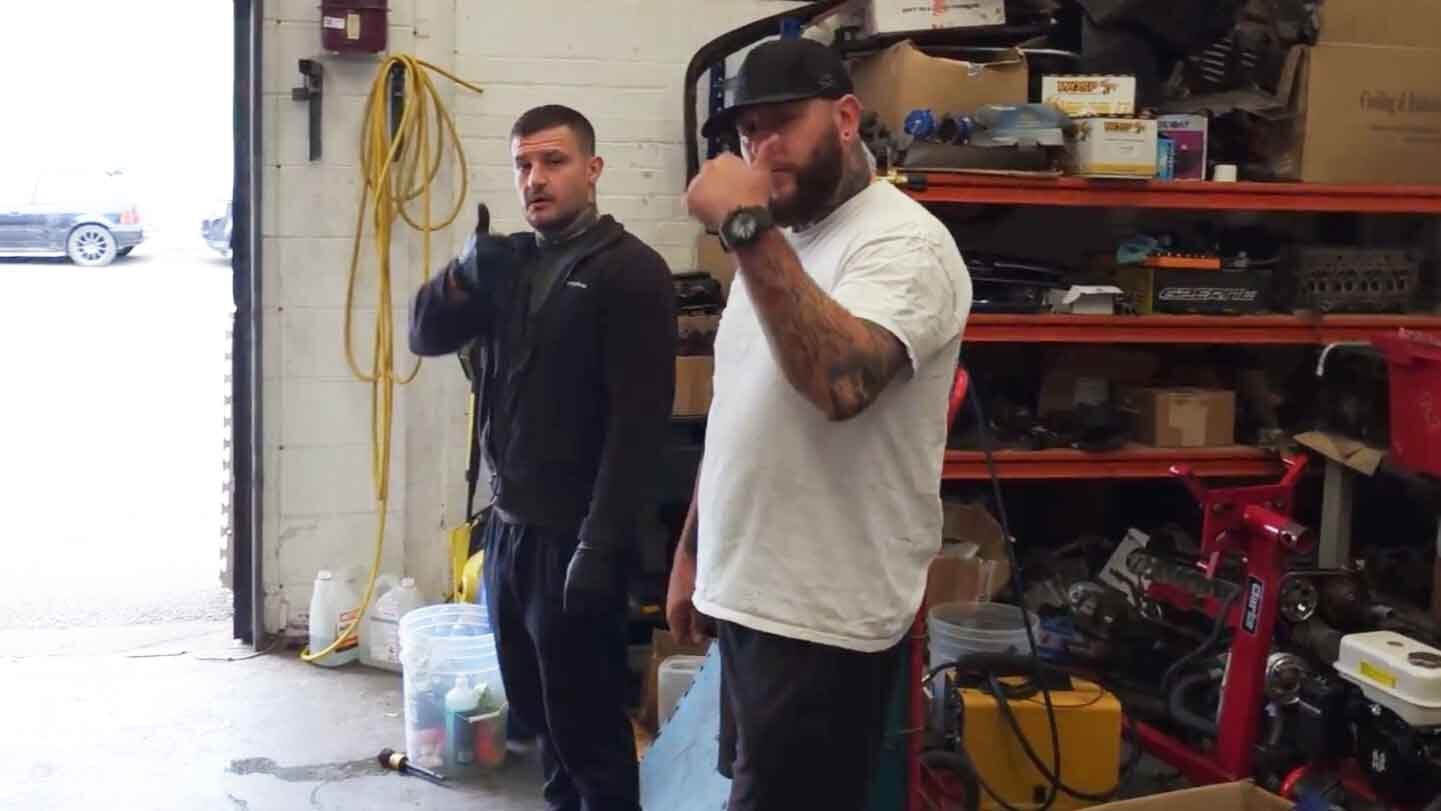
If you wanted to watch that video, we’ll add it below here:
There are plenty of others who have chipped in along the way, too — friends and customers who’ve offered advice or lent a hand when things got tricky.
Getting a car like this to this level isn’t easy for one person to do alone, and we’re genuinely grateful for everyone who’s been part of it!
Why It Was Mapped FWD
If you were wondering why the car was mapped FWD, how and why we did this, we’ll explain below.
We didn’t have access to a 4WD dyno locally, but we still needed to get the car safely mapped, and a dyno is the most stable environment for that. The solution was to remove the front section of the prop and run the car in FWD for the initial tuning sessions.
In case you weren’t aware, the way our Civic AWD (all-wheel drive) system works is that we have a viscous coupler (a device that transfers torque by using a thick fluid) in the middle of the propshaft with locking plates in the rear differential.
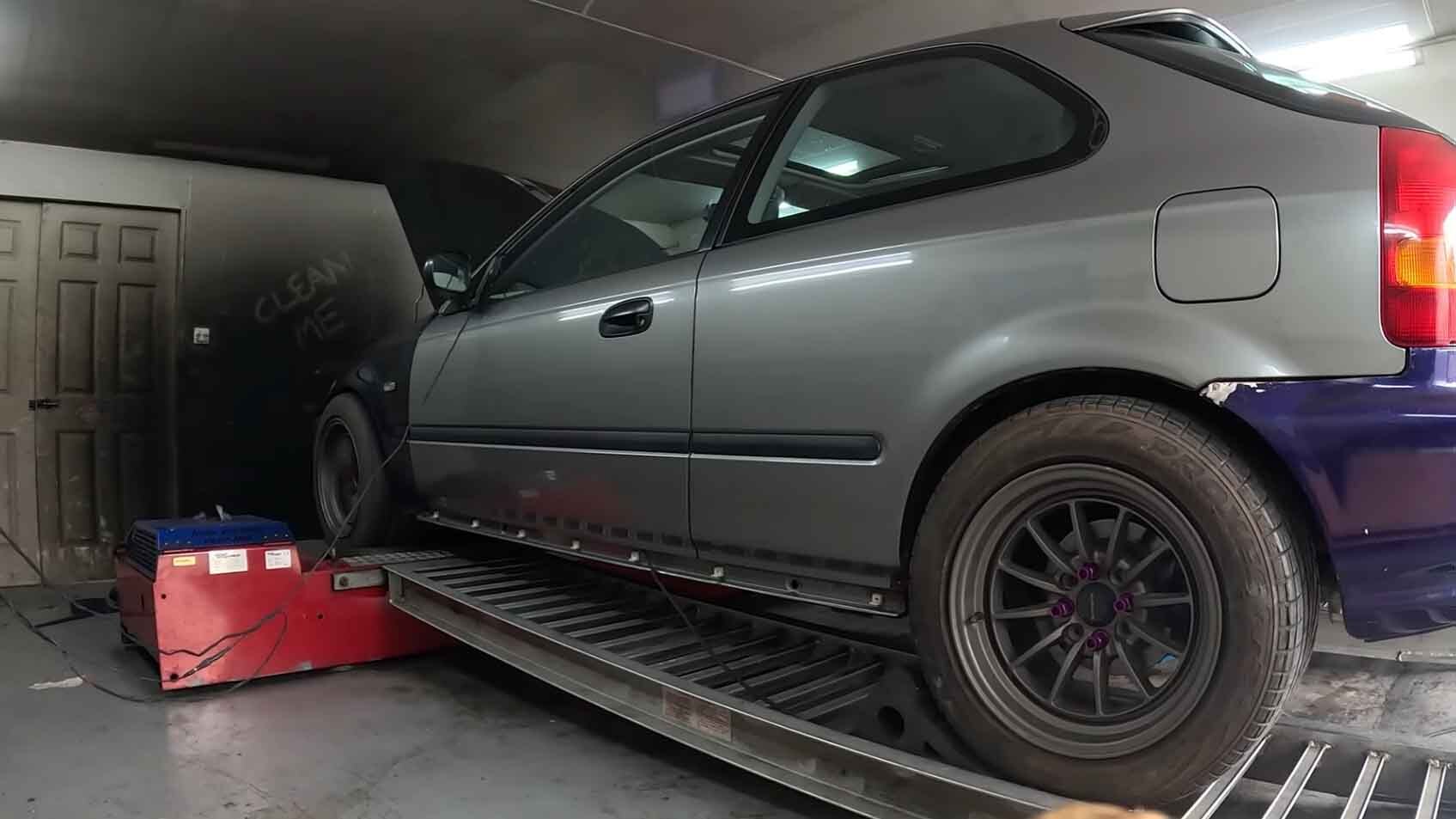
This means that power is only transferred to the rear when the viscous fluid heats up, i.e., the front wheels are spinning. When we remove the front half of the propshaft, the car is essentially FWD and just drives like a normal Civic (minus the extra weight bias).
Making the car FWD lets HPWorx set up the base map without stressing drivetrain components and use any dyno. Once everything functioned properly — fueling, ignition, boost control, and temperatures — we could switch to full AWD, as shown at the end of the video.
Dyno Day Challenges
When the car hit the dyno for its first run, the excitement was unreal after months of planning and fine-tuning. However, as we soon discovered, cars on roller dynos can be challenging.
Despite thoroughly strapping it down, the car spun the rollers as soon as boost came in. The front wheels, with 7-year-old budget tyres, couldn’t hold the torque, leading the tyres to lose traction instead of loading the dyno smoothly.
At that point, we had two options: keep chasing a number and risk inaccurate results, or call it early and protect the car. Alex wisely chose to finish the session at around 1.3bar of boost.
Although we didn’t get a clean peak power run, the important result was solid data: stable fuelling, clean ignition timing, and steady boost response. From a tuner’s perspective, these ensure reliable power delivery, which matters more than just chasing a big dyno number.
Additionally, this car was only ever designed to be a road car, so the numbers didn’t mean a lot to us. As you will see in the later part of the video, it does an excellent job of being a fast road weapon!
Turning Up The Boost!
A few days after the dyno, Alex from HPWorx went back over the tune as the car was now AWD and decided it was safe to raise the boost. He raised it to around 1.6bar, which is a healthy level for this setup.
Based on our previous map at this boost level, we estimate the car is producing approximately 500 to 520 wheel horsepower. While only future hub or 4WD dyno sessions can confirm this precisely, current road performance supports these impressive figures.
And the car doesn’t just feel quick — it feels solid. Boost comes in hard, the torque delivery is smooth, and temperatures stay completely under control, even after a few hard pulls. That’s exactly what we aimed for when choosing parts like the heat reflective tape.
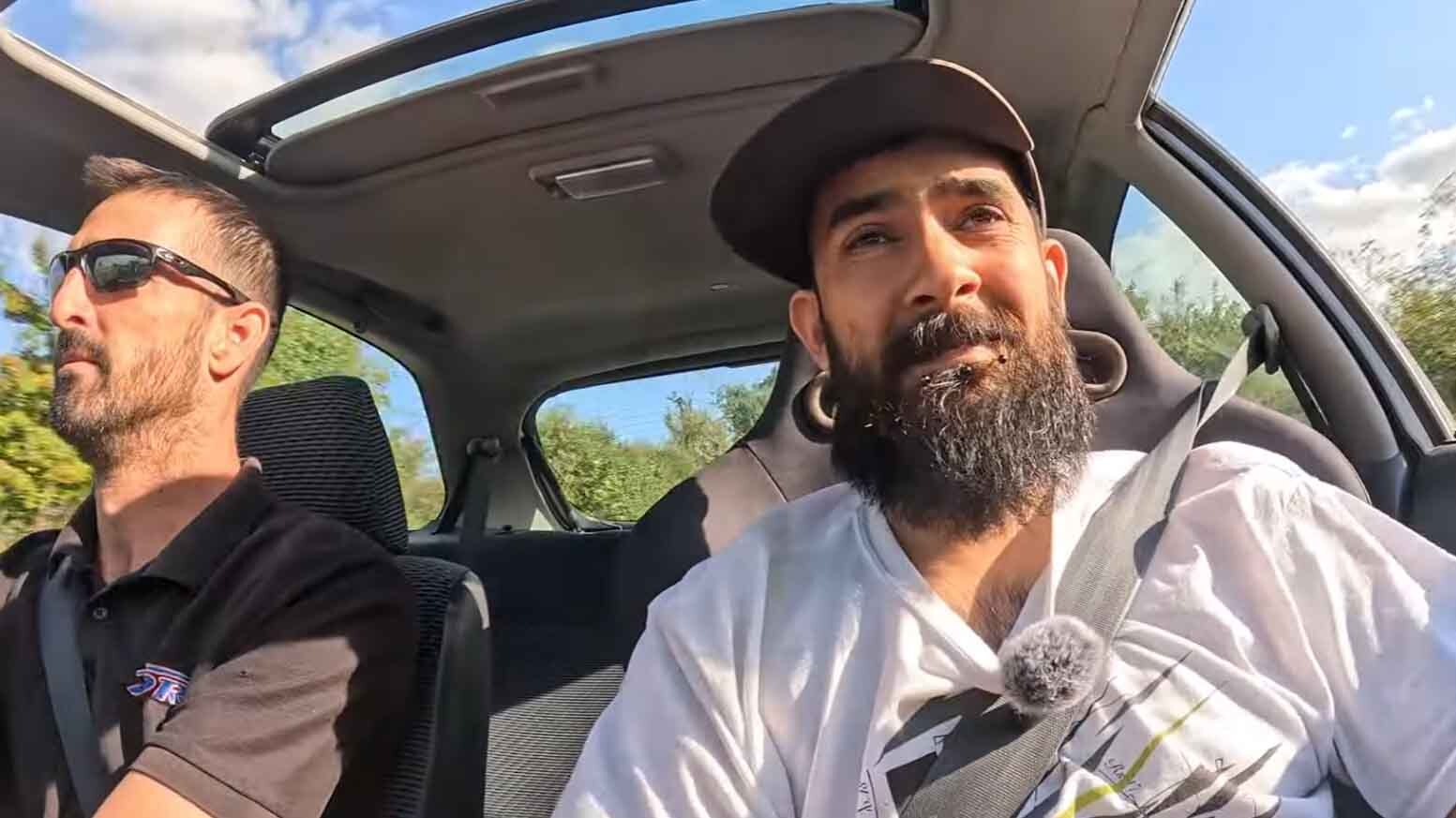
We still need to add some more parts on the heat management side, such as exhaust wrapping the downpipe and a turbo blanket. Although the temperatures were great on the dyno, once you are on the road, it’s sometimes a very different story.
We don’t want to chance it at all, so we would rather fit as much as possible to protect the brand-new engine loom, oil feed, and return line to the turbo. All of the parts work together to keep the heat where it belongs: inside the exhaust system, not bleeding into the engine bay.
Why the Exact Power Figure Doesn’t Matter
This car isn’t about headline dyno figures. The main result is that it delivers strong, usable power and a great driving experience where it matters most: on the road.
For a road car, power is only one piece of the puzzle. What really matters is how usable that power is, how the car responds to throttle, how consistent it feels from one run to the next, and how it handles temperature changes.
With good heat control and careful tuning, the Civic should feel strong every single time we drive it. You don’t need to see the dyno graph to know it’s working exactly as it should (although it’s definitely a nice-to-have).
We plan to get an exact, verified power figure with a hub dyno session soon, but for now, the result speaks for itself every time we drive it on the road.
What’s Next For The AWD Civic
We encountered a few major problems on the day, which were unrelated to tuning.
The first one, the elephant in the room, was the shockingly bad brakes. If you’ve watched the video, you’ll have seen Phil mention several times that we had no brakes. This was because, before that day, we never actually planned on driving it, which changed quickly after everything went well in terms of tuning.
On the day, we were using OEM Honda 242mm brakes, stock callipers, pads, and discs. These were designed for a car making around 70-80bhp, not nearly 600. We experienced significant brake fade by the end of the session.
Shout out to our friend Liam for donating his Honda Legend twin-pot callipers, complete with 282mm modified brackets, which will fit perfectly with the wheels we plan to run. These should transform how it stops. We are going to run PBS ProRace 282mm Civic pads, as the coefficient is incredible for the price, and the RPB 4x100 282mm brake discs.
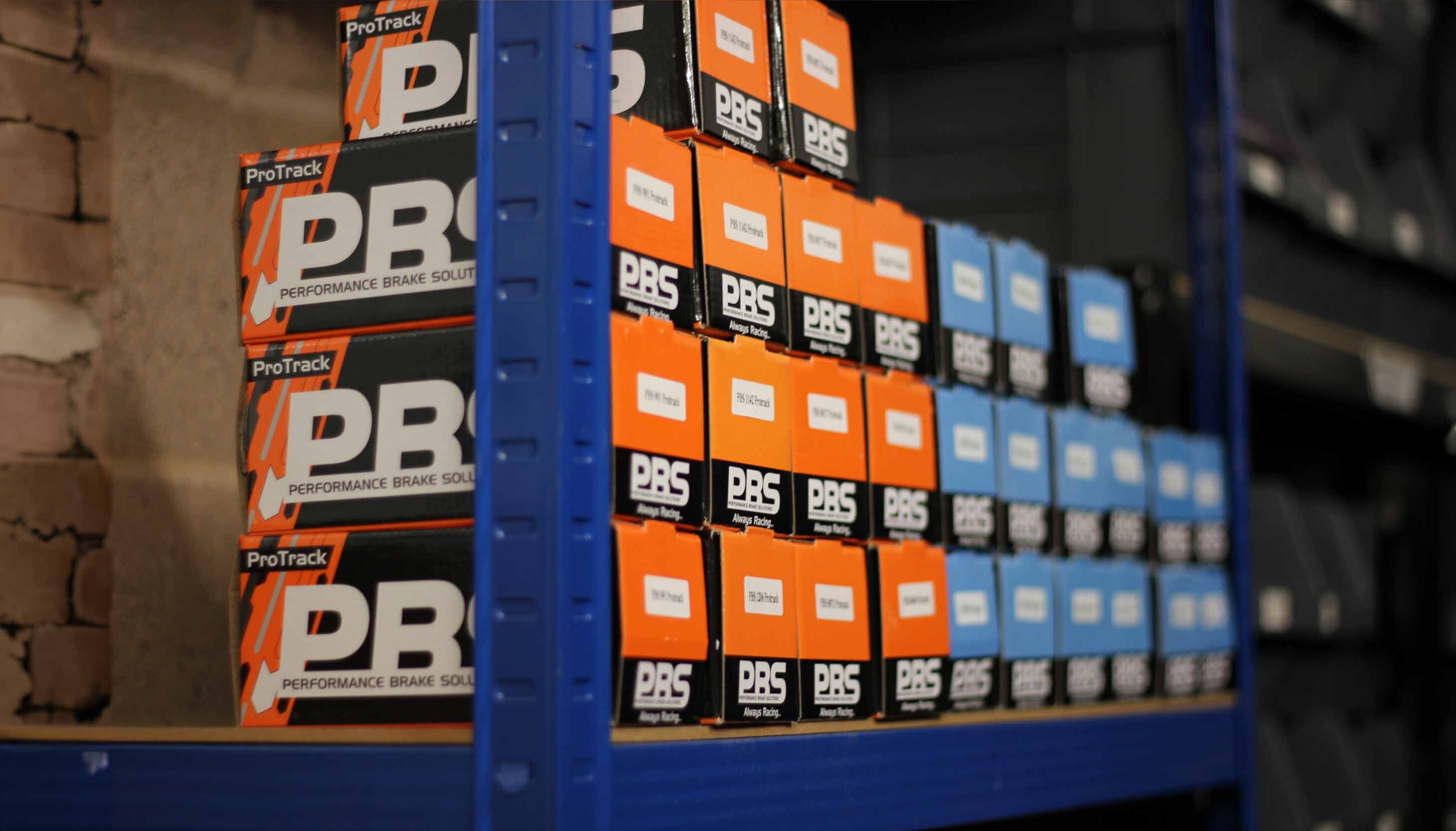
The next issue was the age-old Honda sticking throttle body. When Phil drove the car back to his unit, about 45 minutes from the dyno, it was nearly undrivable under partial throttle because of it. Now that we’re on the Haltech Nexus S2 ECU, we’ve decided to upgrade to a 74mm drive-by-wire throttle body. This should resolve the sticking issue and enable features like cruise control and anti-lag in the future.
Next, we’ll take the car to a hub dyno for a proper power reading, fine-tune the boost-by-gear and traction control, and then proceed to fit the wide arch kit and finalise the wheel setup. Knowing how the car behaves in AWD on the road, we’ll probably go for something like Nankang NS2-Rs or Yokohama AD08RS tyres.
We also plan to wrap the car soon. Once that’s done, we’ll move into long-term testing — heat cycles, fuel trims, and general drivability. The goal is to make it reliable, repeatable, and fun every time we drive it.
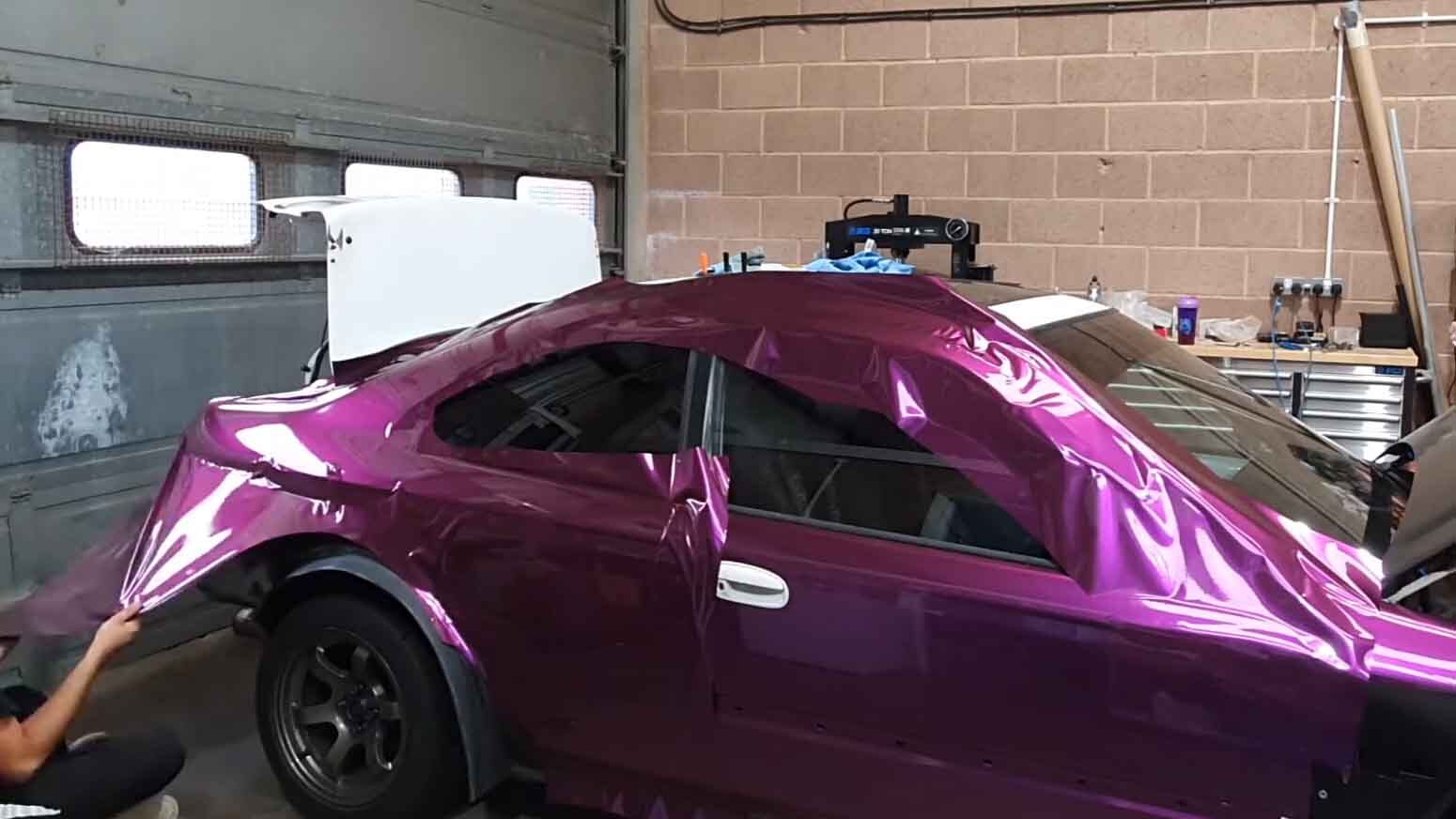
The end goal of this project is to utilise it as a testing platform for new products and heat management solutions. That means real-world data, before-and-after testing, and proving exactly what our parts can do.
If you’re working on your own build, don’t underestimate the value of proper prep and heat management. It’s not glamorous, but it’s what keeps everything else working properly.
Conclusion
Dyno days can be unpredictable. Sometimes things go smoothly; sometimes they throw a few surprises your way. However, that’s all part of building and testing a car with a different engine, fuel system, wiring loom, engine management system, and AWD setup.
What matters most is learning from it, making improvements, and enjoying the process. If you're planning your own dyno session, follow this basic pre-dyno checklist:
- Check for leaks in the engine, fuel, and cooling systems.
- Inspect the condition of your tyres.
- Confirm all fluids are at the correct levels.
- Ensure all mods are complete and tested.
- Double-check electrical connections and the battery.
Following these steps helps avoid endless problems, saving both time and money.
The AWD Turbo Civic might not have left with a power graph, but it left with something more valuable — a proven, reliable setup that performs exactly how we wanted it to.
This project continues to evolve, and next time it hits the dyno, we’ll finally see what the numbers say. Until then, we’re happy with how it feels — and that’s what really counts.

